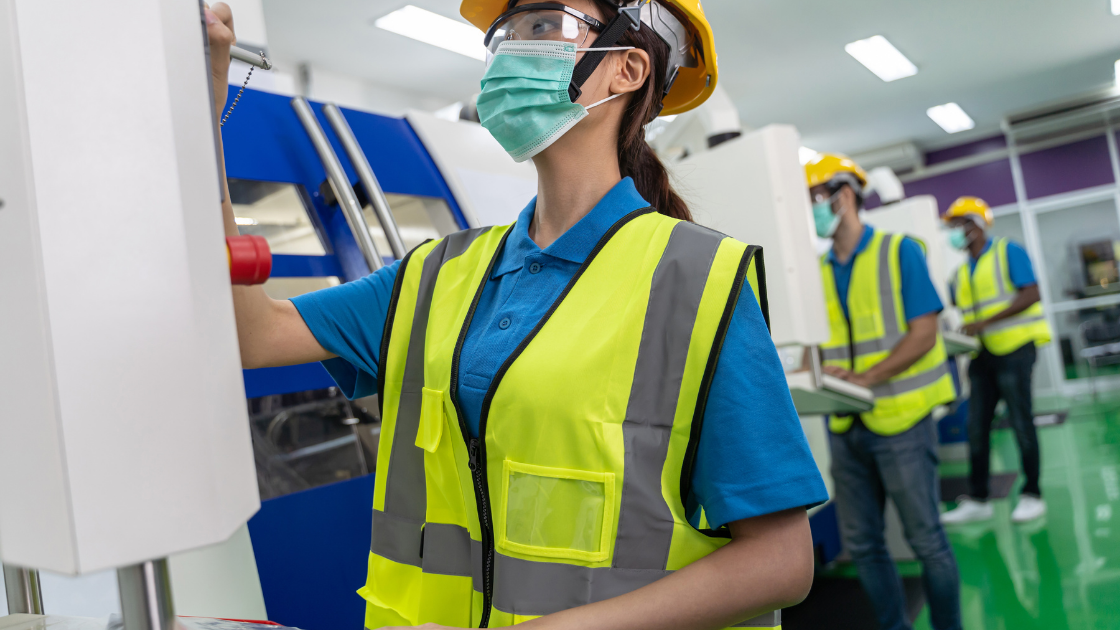The difficult truth is that Covid-19 infection, along with other contagious illnesses, will most likely always be a threat to disrupting the normal flow and routine of a workplace. As we continue adapting to a situation in which Covid-19 and its many variants become a part of normal life, one thing has become abundantly clear in the workplace: weekly testing alone is not an effective or cost-efficient strategy for containing infection.
Weekly (or bi-weekly or semi-weekly) precautionary PCR testing was implemented by some workplaces in response to vaccine mandates, or as a standalone infection control strategy. Some may have enacted testing in lieu of vaccination requirements, while other workplaces may have enacted a broad testing approach for all employees, regardless of vaccination status.
But as case numbers have continued to rise, even with vaccinations present, it is clear that weekly or bi-weekly testing alone will not be enough to continue into the future. Here are the downfalls of precautionary PCR testing and some ideas for how the workplace can instead better identify infection through a targeted, more cost-effective approach.
The problem with Precautionary PCR Testing
PCR testing, considered the “gold standard” of viral tests, carries the advantage of being more sensitive to detecting fragments of virus, but also comes with several disadvantages. In short,
- PCR testing is expensive
- PCR testing is less accessible and must be processed through an appropriate laboratory facility
- PCR testing cannot be self-read or read remotely if an employee is exhibiting symptoms at home
The financial burden of weekly PCR testing can be significant—throughout the Covid-19 pandemic, the standard volume cost has hovered around from $70-90 per test. For a staff of 300, this quickly surpasses $1 million per year. This approach is not sustainable for an endemic illness.
Additionally, and importantly, PCR testing can take a significant length of time to receive results back, averaging 24-48 hours. During times when community spread rates are at their highest, and infection status is most important, this reporting wait time increases. This elongated reporting time prevents the isolation of infectious individuals and when modeled out, contributes to more spread – the very outcome workplaces are trying to prevent.
The other major drawback that PCR testing may have, in a world where even vaccinated individuals are becoming infected, is that a workplace policy that only tests unvaccinated individuals may miss infections in vaccinated employees as well; ignoring the risk of breakthrough infections could open up the door to risk, but at the same time, it’s not always practical or possible to perform weekly PCR tests on all employees.
High-volume screen + Selective Testing™ approach
Instead of expensive and potentially ineffective precautionary testing programs, it may be prudent for a workplace to instead adopt a daily health screening and Selective Testing™ approach for infection control practices.
Unlike relying on testing alone, health screening through a resource such as the welloStationX takes the actual current health and symptoms present of an employee or visitor to the workplace as a baseline barometer to assess if and when additional testing is required. It relies on objective, measurable data, such as touch-free temperature readings, along with collecting information on other symptoms, to first identify a potential risk. Then, once a risk has been identified, further action and assessment can be taken to test that individual based on their current level of risk—not just their vaccination status or because of an arbitrary schedule.
Additionally, the universal screen and targeted testing allows for employee and visitor education, creates a private and secure database of data to quickly identify trends and threats over time, such as seasonal outbreaks or trends timed with common holidays or vacations. It also creates an opportunity for appropriate monitoring and follow-up with an individual who may be infected.
Benefits of universal screening + targeted testing
A targeted approach to limiting infection exposure in the workplace instead of broad-measure PCR testing that may miss a large subset of employees or visitors has many benefits outside of the initial implications of infection control.
Some of the advantages of establishing a universal screening and targeted testing program could include:
- Maintaining employee health confidentiality – With universal screening and measurable data that is inputted automatically identifying employees only with a pin number and stored securely, private health data is left private. Employees need not disclose sensitive health information publicly and even vaccination status can remain confidential.
- Providing objective health data baselines – PCR testing that only tests unvaccinated employees, for instance, or asks employees or visitors to self-report symptoms that would warrant testing is likely to end up missing potential infections, especially if the individual is in the early part of the illness, when symptoms may be not noticeable. An independent temperature testing station like the welloStationX utilizes its status as the only Class-II FDA-cleared automated and non-contact clinical thermometer to provide objective and measurable health data that can detect a rise in baseline temperature that self-testing or reporting may miss. In fact, even a slight elevation in baseline temperature can be one of the early indications of an infection, according to real-life studies on the spread of Covid-19. Relying on an objective and measurable baseline for risk identification goes beyond vaccination status to more reliably identify an employee who may be at risk.
- Sustainable costs – Investing in a welloStationX testing station allows for workplace resources to be allocated in a manner that will serve all employees efficiently and support infection mitigation strategies indefinitely—not just spending from emergency pandemic budgets. Financial resources can be invested in long-term strategy and employee health protection, instead of testing that is, quite literally, creating more medical waste every time it’s utilized.
- Infection control beyond Covid-19 – Covid-19 is not the only pathogen that has the potential to disrupt the workplace; establishing a universal screening program beyond PCR testing alone will help ensure a healthier workplace that limits exposure to all illnesses that could cost time, productivity, and health and wellness for both staff and visitors alike.
- Employee health education – With a PCR test, it’s a swab and the employee goes on their way. A health screening and selective testing program, however, establishes health and wellness as a priority of the workplace. Employees will learn key strategies for self-assessment and be encouraged to be an active participant in their own health, to identify symptoms that may warrant additional assessment, and to feel secure in the knowledge that they are supported in efforts to maintain a healthy workplace (instead of feeling scared to call in or feeling like they should come into work sick).
- Less invasive – A selective testing and health screening approach means Covid-19 testing is used only when needed, which may also improve morale in employees who have been subject to countless testing or who have struggled with divisions created by vaccine restrictions. Instead of subjecting every employee to weekly testing, this is a less invasive approach.
Overall, workplaces that have relied on weekly PCR testing for selected employees may want to consider that broad-level testing may no longer be an efficient, effective, or reliable model for infection control in the workplace.
Instead, a universal health screening program that can identify risk among both vaccinated and unvaccinated individuals, support employee and visitor participation in health assessment and monitoring, and incorporate selective testing as needed may be a positive allocation of resources to create a healthier workplace.


